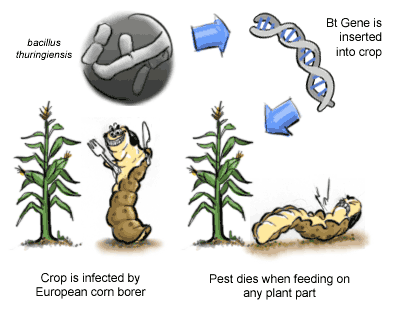Genetic engineering offers enormous benefits to humans. It has the potential to fulfil the human’s needs to a larger extent. For many years it is under practice to modify the organism’s genetic makeup.
Discover the many important advantages and disadvantages of genetic engineering. The pros and cons of genetic testing warrant a closer look. What Is Genetic Testing? Before getting into the pros and cons of genetic testing, it may be helpful to explain exactly what genetic testing is and how it is applied. All human beings have unique sequences of DNA, a chemical database that provides instructions for how the body functions. You may be surprised with the results of our human cloning poll. Check out the pros and cons of genetic engineering and its techniques. Should it be legal? This article helps explain what GMOs are, provides a balanced explanation of their pros and cons,. Modified using genetic engineering technology.
However, it also causes the number of harmful effects. So, we must weigh the Pros and Cons of Genetic Engineering.
Contents
Pros and Cons of Genetic Engineering in Animals and Humans
Genetic engineering benefits to cure diseases by the use of gene therapy, by organ transplant, and tissue transplant. It also helps to diagnose the diseases by the use of sensors or nano-chips. It also contributes to the production of designer babies with parent’s desired features, intelligence characters. In animals, genetic engineering produces transgenic animals to satisfy the requirement of meat by humans. The clone animals are being used as the test organism in the laboratory in order to test the drug in clinical trials. It also increases milk production in animals also to produce therapeutic important compounds.
Making transgenic animals or human clone is unethical as said by most of the opponents. Genetic diversity, which is important, in different species it will be no more because of genetic engineering. Instead of curing diseases via gene therapy, organ transplant it may result in causing more genetic deformities in both animals as well as humans. Though these experiments or treatment as not easy to be done it needs a large amount of funding. It also needs model organisms in large amount on which experiments can be done. Creating designer babies is also not a process with any errors. The huge number of genetic defects can occur in making designer babies.
Pros
- Cure & Diagnose Disease
- Designer Babies
- Increased Milk Production in farm animals
- Clones as test organisms
- Transgenic Animals for constant meat supply
- Therapeutic compounds production from animals

Cons

- Unethical
- Reduced genetic diversity
- Increased genetic deformities
- Require large fundings
- Designer babies more prone to genetic disorders

Pros and Cons of Genetic engineering in Plants
Increasing the number of population day by day needs more food for human. To supply the food to the huge population genetic engineering is the solution. Genetic engineering fulfils the food demand. It makes the plant resistant to pest, insects etc. Genetic engineering to increase the food quantity. It also enhances the crop productivity. As plants are resistant to pesticide, insecticide it will limit the use of pesticide spray. This will affect to reduce the environmental pollution. It is also important to increase the shelf life of food so that it can stay fresh for a longer period of time. Plants are going to have the property to be able to grow in poorer environmental conditions.
Genetic engineering can also affect the wild type of crops. As it transfers the gene to wild plant. It can also target the undesirable gene. Allergens in plants produced as a result of genetic engineering can be transferred to human as if humans eat that allergic food. Cross specie barriers can cause harmful effects. With increasing quantity of food, it is possible that food can have less nutritional properties as compared to wild type.
Pros
- To fulfil food demand
- Insects or pest resistant
- Limited use of pesticide or insecticides spray
- Improved food quantity
- Increased shelf life
- To grow in harsh environmental conditions
Cons
- Gene transfer to wild-type
- Allergens transfer to humans
- Cross specie barrier
- Less nutritional properties
Pros and Cons of Genetic Engineering in Microorganisms
Genetic engineering in microorganism produces the large number of pharmaceutically important compounds such as insulin, clotting factors. CRISPR (clustered regulatory interspaced short palindromic repeats) system found in prokaryotes can be used to cure diseases by genetic manipulation. Genetic engineering can also enhance biofuel production. Microbes after genetic engineering with improved properties can be used as a vector for plant improvement, and to facilitate the crop growth. Genetic engineering halts the microorganism’s ability to cause diseases. Microorganism those are not thermophile via genetic modification they will have the ability to survive high temperature.
Pros And Cons Of Genetic Engineering In Humans
Genetic manipulation of microorganisms that are non-pathogenic may develop the pathogenic form of these non-pathogenic strains. Similarly in genetic manipulation of pathogenic strains to less or non-pathogenic strains during drug development may develop its toxic form. Genetically engineered microorganism poses risk to the human health as well as to the environment.
Pros
- Pharmaceutical compounds
- CRISPR for treating genetic diseases
- For biofuel production
- As a vector for plant improvement
- Halt disease-causing property of microorganism
- Ability to survive in high temperature
Cons
Pros And Cons Of Genetic Engineering Quizlet
- Can develop
- Non-pathogenic strain to pathogenic
- Pathogenic to virulent
- A risk to human health
- Risk to environment
Pros And Cons Of Genetic Engineering Animals
So far, due to lack of public understanding about genetic engineering and regulatory bodies. It is not being perceived as safe by masses. Both International and national laws are needed. Certain limits need to be drawn which can only be done by scientists, lawmakers and activists can sit together.